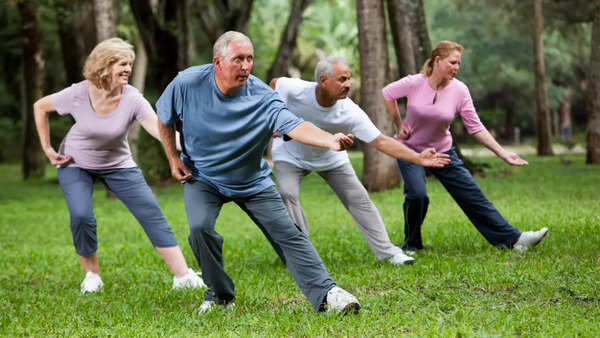Tai chi is more popular than ever, here’s why! |

The ancient Chinese martial art form Tai chi is making a comeback. Originally developed in China by monks for self-defense, Tai chi later evolved into a form of exercise across the world for stress release, balance, strength, coordination, and cognitive improvement. Just like other martial arts and exercises, this dates back to the 1300 AD.
What is Tai chi?

Tai chi is a practice that involves a series of slow gentle movements and physical postures, a meditative state of mind, and controlled breathing, according to the National Center for Complementary and Integrative Health. The earliest recorded history of Tai Chi dates back to the T’ang Dynasty (618–960 AD), when recluses in the Chinese mountain regions practiced its movement patterns.
It was in the 20th century, that the health benefits of Tai chi were discovered, and the martial arts form found a new place in wellness exercise. Often referred to as Standing Meditation or Moving Meditation, Tai chi is an internal form of martial arts. It is based on different postures, linked with transitions, creating flowing movements. While Tai Chi is often practiced with others, it can also be done alone, fostering a sense of peaceful mindfulness.
Health benefits
Over 500 studies link tai chi to improvements in mobility, mental health, and various chronic conditions. When practiced regularly, Tai chi can help to improve your overall health. The several health benefits and low-impact exercise style makes this martial art form popular in today’s times.
Peter Wayne, director of the Osher Center for Integrative Medicine at Harvard Medical School and at Brigham and Women’s Hospital in Massachusetts, noted that a body of “credible medical research that has catalyzed tai chi’s popularity in the West.”
Dr. Paul Lam, a family medicine physician from Sydney, Australia has been practicing this martial art since 1974 and is also an instructor now. Lam confirms that today, tai chi is a practice that millions of people around the world participate in.
Tai chi helps with muscle strength. According to a report by Harvard Health Publishing, Tai chi can improve both lower-body strength and upper-body strength. It also helps with flexibility. Tai chi can boost your body’s flexibility. Tai chi enhances balance and may reduce falls, according to several studies. Proprioception, which is the body’s ability to sense its position in space, naturally declines with age. Tai chi, however, trains this vital sense. Depending on the speed and size of the movements, Tai chi can also help with aerobic conditioning.
Dong-Yun Wang, a physical therapist based in Flushing, New York, asserts that Tai chi has other health benefits such as improving symptoms related to arthritis, Parkinson’s disease, and chronic obstructive pulmonary disease (COPD).
The health benefits of Tai chi are not just limited to physical health. It has a crucial impact on the mental health. Tai chi helps to reduce stress and improves mood. It is also said to promote weight loss and also improve cognition in older adults. And just like any other form of exercise, if not practiced properly, Tai chi too could result in injury.
(Pic courtesy: iStock)



